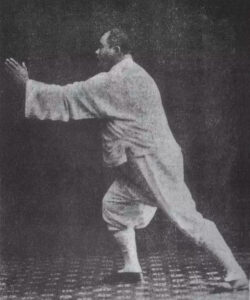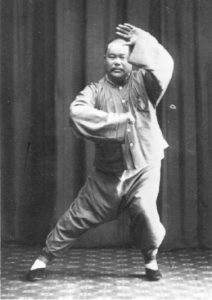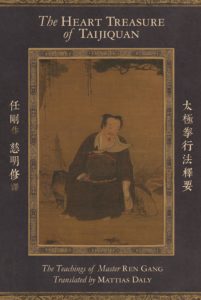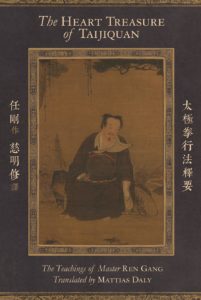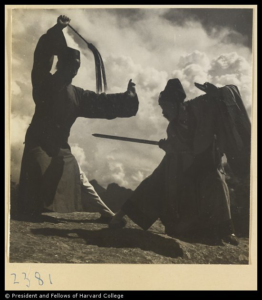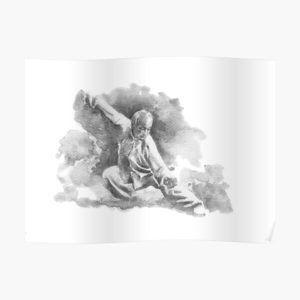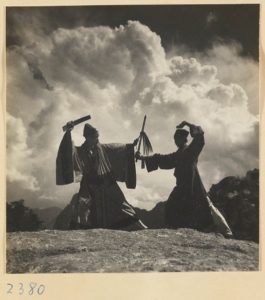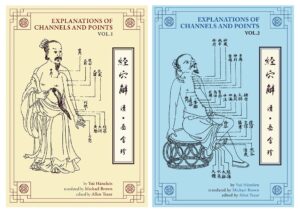Search Results: heart treasure
The Heart Treasure of Taijiquan By Ren Gang Translated by Mattias Daly The following post is an excerpt from a working draft of 《The Heart Treasure of Taijiquan》 [太极拳行法释要] written by Ren Gang and translated by his disciple Mattias Daly. This book revolves, as the title suggests, around the quintessence Tai Ji Quan and will…
Read MoreMaster Ren Gang’s The Heart Treasure of Taijiquan (excerpt 4) translated by Mattias Daly The passage below comes from Ren Gang’s ‘The Heart Treasure of Taijiquan’ translated by Mattias Daly and available on our website with free shipping worldwide at the reasonable price of 20 USD: https://purplecloudinstitute.com/…/the-heart-treasure…/: Straightening the waist is done to establish the…
Read MoreIn this episode we interview Mattias Daly about his most recent translation for Purple Cloud Press, The Heart Treasure of Taijiquan by Ren Gang. Written for the modern reader, this book thoroughly illuminates the authentic inner teachings of Yang family taijiquan. From detailing contemporary misunderstandings of taijiquan and its place in Chinese culture, to explaining…
Read Moreby
Please note that delivery may take up to 3 weeks depending upon your location. We do ship globally with some exceptions.
Written for the modern reader, this book thoroughly illuminates the authentic inner teachings of Yang family taijiquan. From detailing contemporary misunderstandings of taijiquan and its place in Chinese culture, to explaining the correct meanings of fundamental concepts; and from elucidating classic writings, to recording an extensive Q&A with students, The Heart Treasure of Taijiquan enables the reader to understand the essence of this path. The principles presented in this volume can be freely integrated with training in any style of taijiquan, or used to deepen any internal or external martial arts practice.
Master Ren Gang of Shanghai is a true inheritor of Yang style taijiquan. Deeply familiar with its philosophical marrow, he is recognized by his elders and peers as a master at the highest levels of practice, with formidable aptitude in its combat applications. His taijiquan is pure and free from elements borrowed from other traditions. Ren has gained the full benefits of the art physically, mentally, and spiritually.
The translator, Mattias Daly, is a twenty-year student of Chinese martial arts, spiritual practices, and traditional healthcare. In order to ensure a highly faithful translation, he made numerous journeys to Shanghaito discuss the complexities of taijiquan philosophy with Master Ren and personally experience the training methods and martial applications he describes.
Master Ren Gang’s The Heart Treasure of Taijiquan (excerpt 3) translated by Mattias Daly I first met Ren Gang in the spring of 2011, when his disciple and good friend of mine, Zhong Yingyang, invited me to join them for an outdoor lunch in an orchard in suburban Shanghai, where the peach trees were in…
Read MoreExcerpt from Master Ren Gang’s The Heart Treatise of Taijiquan ______________________________________________________________________ translated by Mattias Daly Some thoughts on traditional Chinese martial arts When the video of Xu Xiaodong and Lei Lei’s arranged fight suddenly went viral in 2018 it inspired a large number of people to discuss and even attack the traditional martial arts, and…
Read MoreThe stories and teachings on Daoist medicine expounded here emerge from one of the last remaining inheritors of the knowledge of the藥王派 (Yao Wang Pai, Medicine King Sect of Daoist Medicine), as it is currently transmitted at the Five Immortals Temple on Bai Ma Shan. Much of this legacy has been lost, and much of…
Read MorePublished Works The Arts of Daoism The Arts of Daoism presents a set of key lectures on some of the major arts and practices of Daoism by a contemporary Daoist priest and master, Li Shifu, the Abbot of Five Immortals Temple in the Wu dang mountains in China. These are supported by generous excerpts from classic…
Read Moreby
Please note that delivery may take up to 3 weeks depending upon your location. We do ship globally with some exceptions.
Explanations of Channels and Points (Volume 1 and Volume 2) is a Qing dynasty acupuncture commentary by Yue Hanzhen (1602-1693 CE). Despite having never been published, this work has survived owing to its historical significance. It was the first to integrate point locations and classical channel pathways, thereby setting a precedent of assigning a numbering scheme to channel points.The first volume includes explanations of the points and channels of the lung, large intestine, stomach, spleen, heart, small intestine and bladder channels, while the second volume covers the kidney, pericardium, sanjiao, gallbladder, liver, as well as the eight extraordinary channels.
In addition to a discussion of text, author and the various historical texts mentioned in this work. However, Yue Hanzhen has added something which was fairly unique at the time – detailed explanations of the rationale for why certain points treated certain indications. The literature abounds with point indications in prose, as well as many famous odes and songs, but rarely is any explanation offered. For example, the use of KI 1 to treat dry tongue and swollen pharynx is explained thus: Explanation: dry tongue and swollen pharynx is fire qì ascending, it is appropriate to drain this point.
There are a few minor textual inconsistencies, such as different distances given for the Kidney channel from the midline for some points, and some citations of needle retention times not matching the original text quoted, however these are helpfully highlighted in the translator’s footnotes. Incidentally, the retention times which are mentioned are very short – between 3 and 10 respirations, which is similar to what is found in the Systematic Classic of Acupuncture & Moxibustion.
Explanations of Channels and Points, as a text is an important landmark in the development of Chinese Medicine, not only for its early use of numbering the points but also for its explanations of the pathomechanisms of disease. Its systematic approach, which is heavily sourced from the classics, was not uncommon for works of this era involving herbalism, but rarely was it achieved with the degree of detail and clarity found in Yuè Hánzhēn’s writing and applied to acupuncture. The entries for each point are comprehensive and clear, that they require little assistance for immediate understanding and application of the techniques suggested by the author.
Explanations of Channels and Points Vol.1 – Table of Content
Explanations of Channels and Points Vol.1 – Sample
Explanations of Channels and Points Vol.2 – Table of Content
Explanations of Channels and Points Vol.2 – Sample
Read More
